

With two wheels, high speed, and little between the rider and the pavement, motorcycles are one of the most dangerous forms of motorized transport. This risk is central to the motorcycle’s defiant cultural appeal, spurred on in part by the Hells Angels and films like “Rebel Without a Cause” (1955), “Easy Rider” (1969), and “Rumblefish” (1983).
But rising awareness of the fact that, according to the U.S. Centers of Disease Control and Prevention, motorcycle helmets reduce rider fatality by as much as 42% and brain injury by up to 69% seems to have had an effect on many (but by far not all) motorcycle enthusiasts. Regardless of state helmet laws, many riders are heeding the warnings and helmeting up. Still, 1978 was the deadliest year for motorcyclists since 1975.
To determine the 20 deadliest year for motorcyclists, 24/7 Wall St. reviewed data from the National Highway Traffic Safety Administration. Years from 1975 to 2020 were ranked based on the number of fatal crashes that involved motorcycles per 100,000 registered motorcycles. Data on lives saved by helmets and lives that could have been saved by helmets also came from the NHTSA. (Also see: these are the 20 car accidents Americans get in the most.)
Looking at the 20 years on the list, the more recent years differ from the earlier years in how many riders and passengers have been saved thanks to helmets and how many would have been saved.
For example, from 1977 to 1981, nearly 4,500 lives were saved because of helmets and about 8,100 lives could have been saved if the riders or passengers had been wearing helmets, according to the NHTSA.
Compare that to the more recent period of 2004 to 2008, when almost 8,200 lives were saved because of helmets and almost 3,800 deaths could have been saved if the riders or passengers had been wearing helmets. In other words, the number of “could haves” has declined from peak years in the late ‘70s and ‘80s in data going back to 1975.
The federal government enacted a universal helmet law in 1966 that made some highway safety and road construction funds contingent on state helmet-use requirements. But in 1975, these federal penalties for noncompliance were lifted and about half of the states responded by repealing their helmet-use laws.
Today, according to the Insurance Institute for Highway Safety, 16 states and the District of Columbia require helmets for all motorcycle riders and passengers, while most states require them for younger riders or passengers, 17, 18, or 20 years and younger. Three states — Illinois, Iowa, and New Hampshire — have no helmet laws. (This state has the worst highways in America.)
Here is the deadliest year for motorcyclists.

20. 2008
> Fatal crash rate: 69.8 per 100,000 registered motorcycles
> Fatal crashes involving motorcycles: 5,409 — 3rd most since 1975
> Lives saved by motorcycle helmets: 1,836 — 3rd most since 1975
> Est. lives that would have been saved by helmets: 827 (15.3% of all deaths)
[in-text-ad]
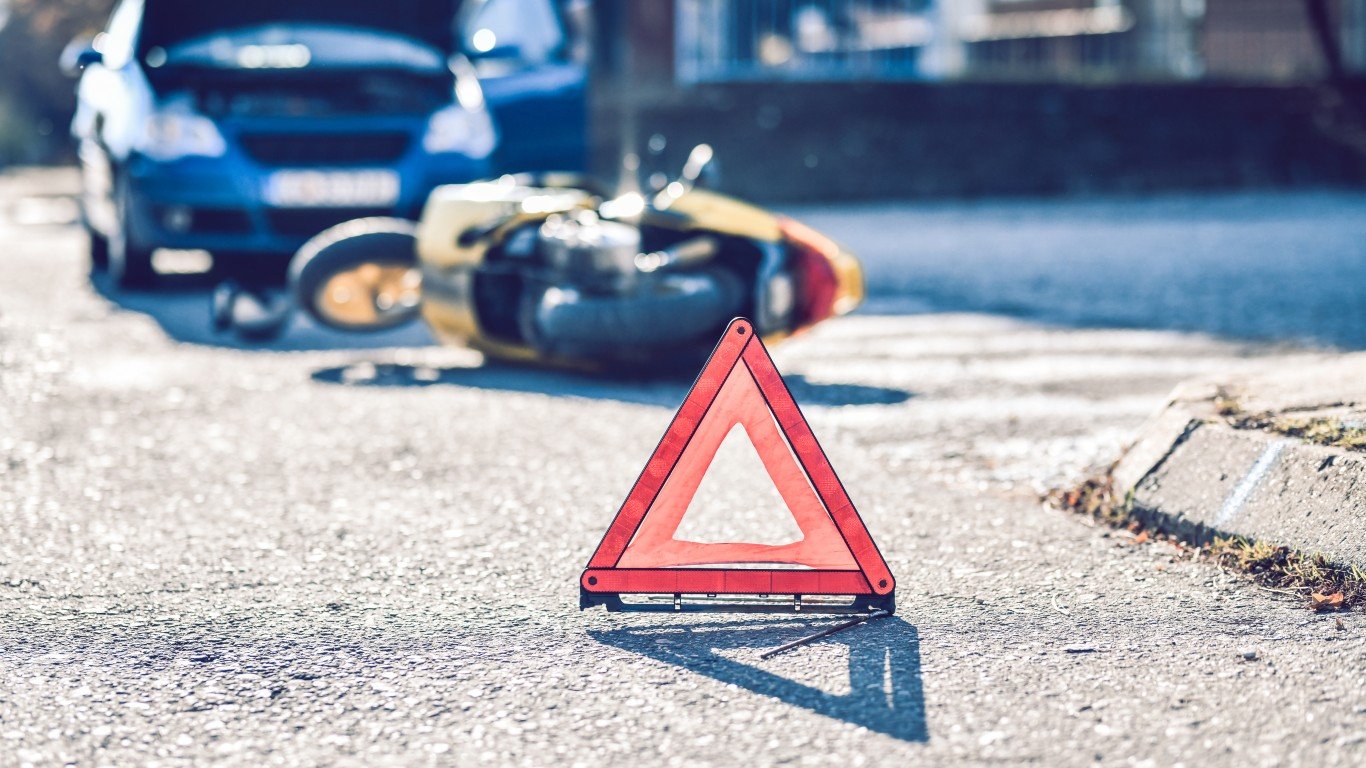
19. 2003
> Fatal crash rate: 70.8 per 100,000 registered motorcycles
> Fatal crashes involving motorcycles: 3,802 — 18th fewest since 1975
> Lives saved by motorcycle helmets: 1,173 — 15th most since 1975
> Est. lives that would have been saved by helmets: 651 (17.1% of all deaths)

18. 2004
> Fatal crash rate: 71.5 per 100,000 registered motorcycles
> Fatal crashes involving motorcycles: 4,121 — 20th fewest since 1975
> Lives saved by motorcycle helmets: 1,324 — 14th most since 1975
> Est. lives that would have been saved by helmets: 673 (16.3% of all deaths)

17. 1989
> Fatal crash rate: 72.2 per 100,000 registered motorcycles
> Fatal crashes involving motorcycles: 3,192 — 11th fewest since 1975
> Lives saved by motorcycle helmets: 561 — the fewest since 1975
> Est. lives that would have been saved by helmets: 553 (17.3% of all deaths)
[in-text-ad-2]

16. 2006
> Fatal crash rate: 74.3 per 100,000 registered motorcycles
> Fatal crashes involving motorcycles: 4,963 — 12th most since 1975
> Lives saved by motorcycle helmets: 1,667 — 8th most since 1975
> Est. lives that would have been saved by helmets: 756 (15.2% of all deaths)

15. 2007
> Fatal crash rate: 74.3 per 100,000 registered motorcycles
> Fatal crashes involving motorcycles: 5,306 — 5th most since 1975
> Lives saved by motorcycle helmets: 1,788 — 5th most since 1975
> Est. lives that would have been saved by helmets: 805 (15.2% of all deaths)
[in-text-ad]

14. 2005
> Fatal crash rate: 75.2 per 100,000 registered motorcycles
> Fatal crashes involving motorcycles: 4,682 — 17th most since 1975
> Lives saved by motorcycle helmets: 1,554 — 12th most since 1975
> Est. lives that would have been saved by helmets: 731 (15.6% of all deaths)
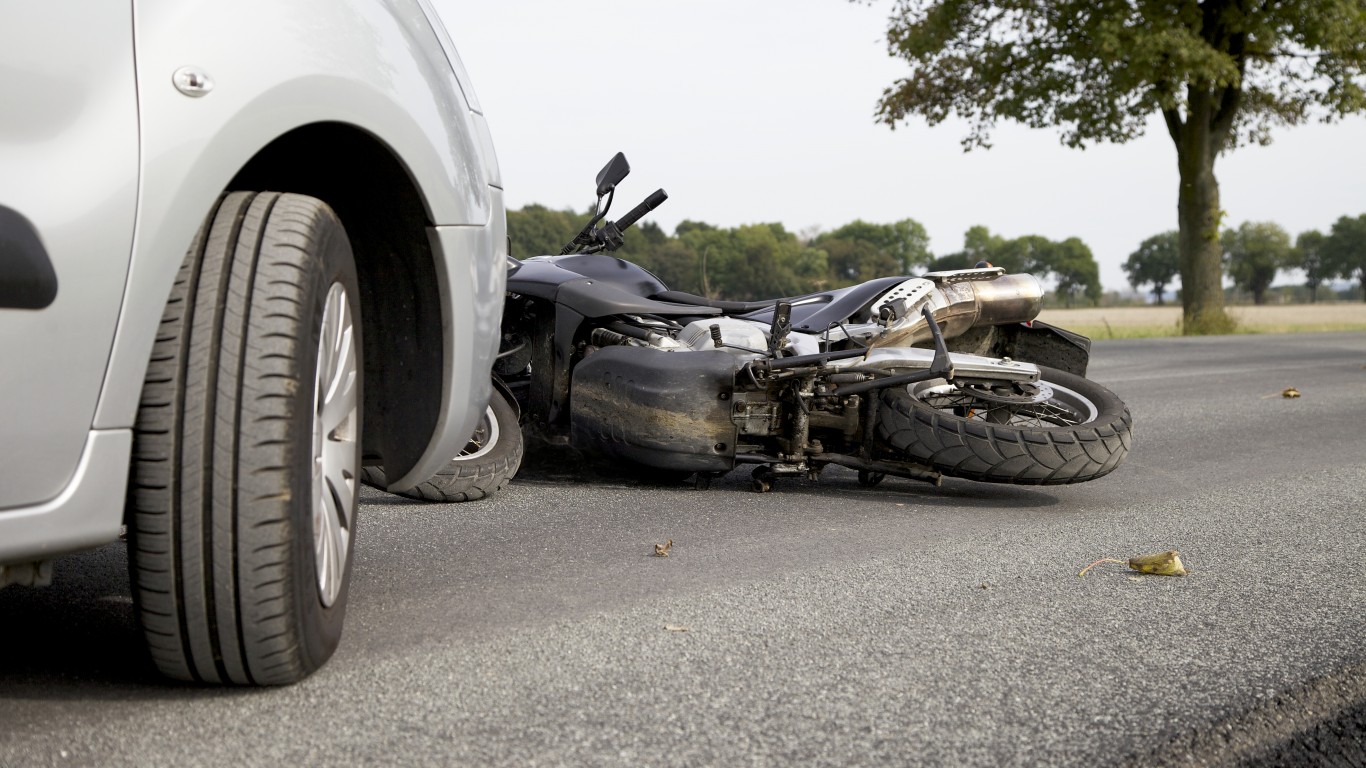
13. 1990
> Fatal crash rate: 76.9 per 100,000 registered motorcycles
> Fatal crashes involving motorcycles: 3,276 — 14th fewest since 1975
> Lives saved by motorcycle helmets: 655 — 9th fewest since 1975
> Est. lives that would have been saved by helmets: 541 (16.5% of all deaths)
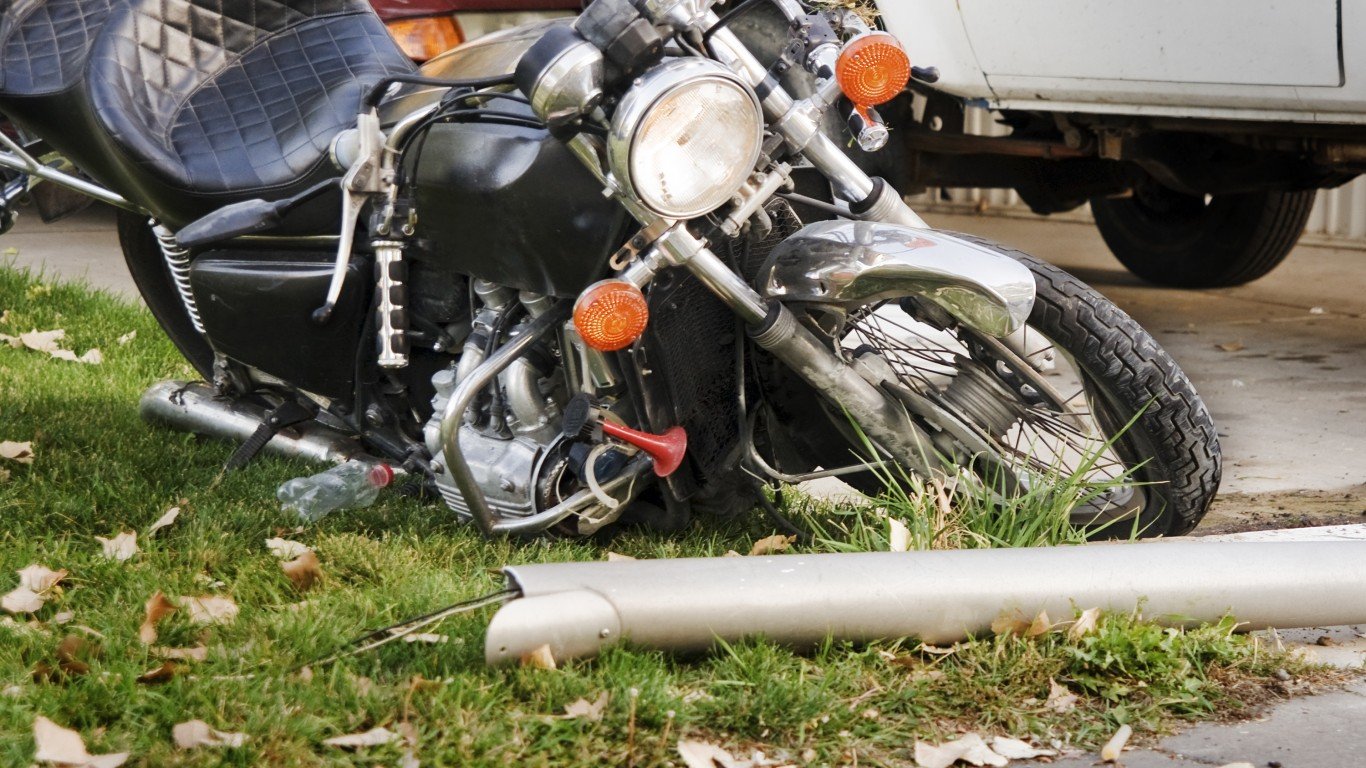
12. 1983
> Fatal crash rate: 77.0 per 100,000 registered motorcycles
> Fatal crashes involving motorcycles: 4,302 — 22nd fewest since 1975
> Lives saved by motorcycle helmets: 735 — 12th fewest since 1975
> Est. lives that would have been saved by helmets: 1,450 (33.7% of all deaths)
[in-text-ad-2]

11. 1982
> Fatal crash rate: 78.1 per 100,000 registered motorcycles
> Fatal crashes involving motorcycles: 4,495 — 23rd fewest since 1975
> Lives saved by motorcycle helmets: 816 — 19th fewest since 1975
> Est. lives that would have been saved by helmets: 1,528 (34.0% of all deaths)

10. 1988
> Fatal crash rate: 81.0 per 100,000 registered motorcycles
> Fatal crashes involving motorcycles: 3,715 — 17th fewest since 1975
> Lives saved by motorcycle helmets: 622 — 4th fewest since 1975
> Est. lives that would have been saved by helmets: 644 (17.3% of all deaths)
[in-text-ad]

9. 1987
> Fatal crash rate: 83.2 per 100,000 registered motorcycles
> Fatal crashes involving motorcycles: 4,067 — 19th fewest since 1975
> Lives saved by motorcycle helmets: 667 — 11th fewest since 1975
> Est. lives that would have been saved by helmets: 697 (17.1% of all deaths)

8. 1977
> Fatal crash rate: 84.4 per 100,000 registered motorcycles
> Fatal crashes involving motorcycles: 4,164 — 21st fewest since 1975
> Lives saved by motorcycle helmets: 970 — 17th most since 1975
> Est. lives that would have been saved by helmets: 1,472 (35.4% of all deaths)

7. 1985
> Fatal crash rate: 84.6 per 100,000 registered motorcycles
> Fatal crashes involving motorcycles: 4,608 — 21st most since 1975
> Lives saved by motorcycle helmets: 788 — 16th fewest since 1975
> Est. lives that would have been saved by helmets: 764 (16.6% of all deaths)
[in-text-ad-2]

6. 1984
> Fatal crash rate: 85.0 per 100,000 registered motorcycles
> Fatal crashes involving motorcycles: 4,659 — 18th most since 1975
> Lives saved by motorcycle helmets: 813 — 18th fewest since 1975
> Est. lives that would have been saved by helmets: 759 (16.3% of all deaths)

5. 1981
> Fatal crash rate: 85.1 per 100,000 registered motorcycles
> Fatal crashes involving motorcycles: 4,963 — 11th most since 1975
> Lives saved by motorcycle helmets: 843 — 21st fewest since 1975
> Est. lives that would have been saved by helmets: 1,667 (33.6% of all deaths)
[in-text-ad]
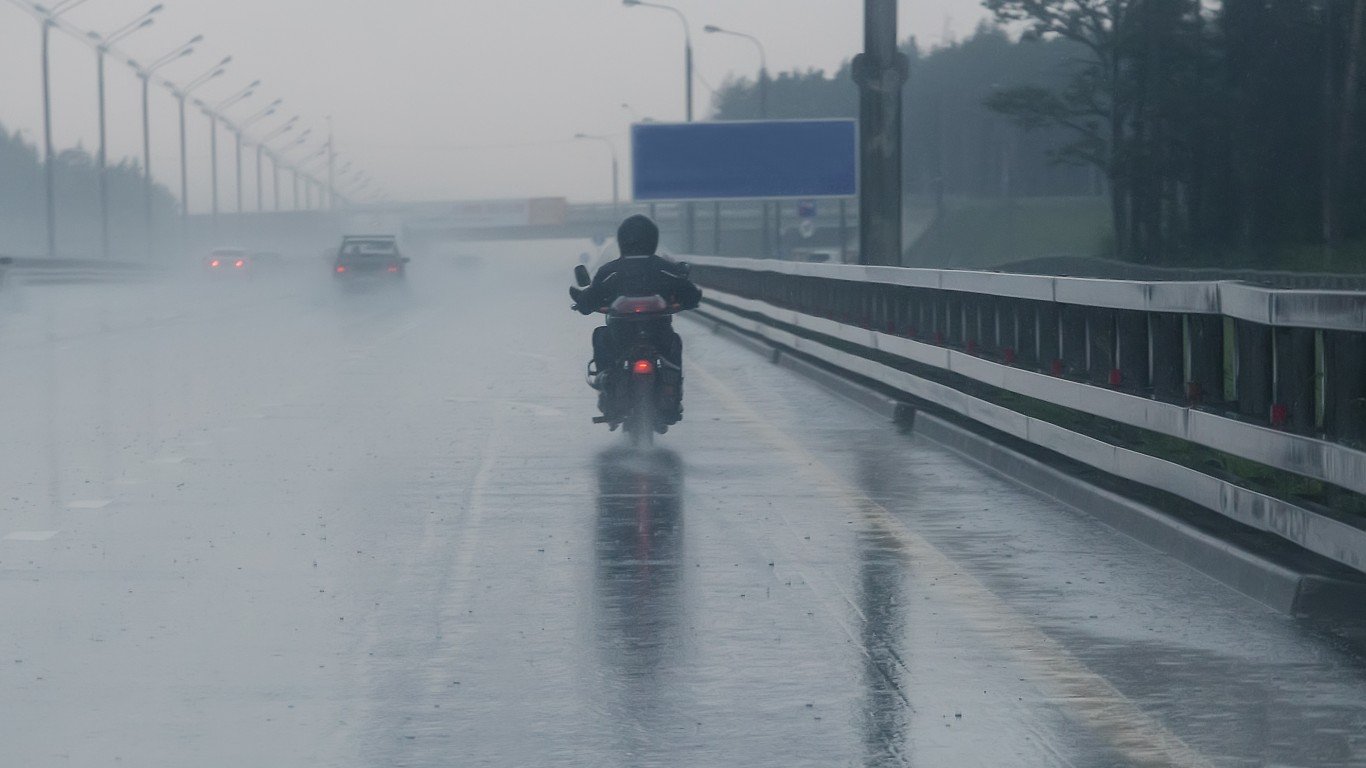
4. 1986
> Fatal crash rate: 87.9 per 100,000 registered motorcycles
> Fatal crashes involving motorcycles: 4,570 — 23rd most since 1975
> Lives saved by motorcycle helmets: 807 — 17th fewest since 1975
> Est. lives that would have been saved by helmets: 751 (16.4% of all deaths)
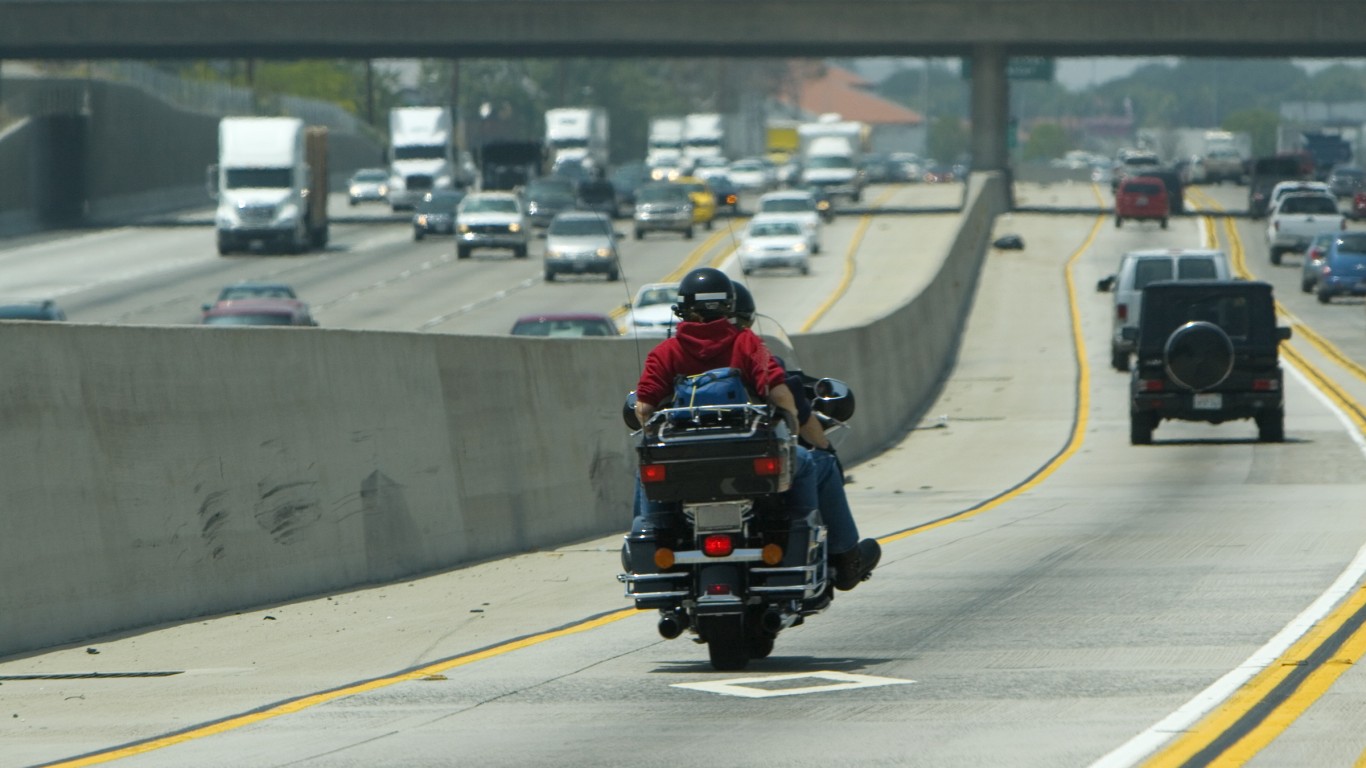
3. 1979
> Fatal crash rate: 90.7 per 100,000 registered motorcycles
> Fatal crashes involving motorcycles: 4,916 — 13th most since 1975
> Lives saved by motorcycle helmets: 885 — 20th most since 1975
> Est. lives that would have been saved by helmets: 1,676 (34.1% of all deaths)

2. 1980
> Fatal crash rate: 91.2 per 100,000 registered motorcycles
> Fatal crashes involving motorcycles: 5,194 — 6th most since 1975
> Lives saved by motorcycle helmets: 871 — 22nd fewest since 1975
> Est. lives that would have been saved by helmets: 1,744 (33.6% of all deaths)
[in-text-ad-2]
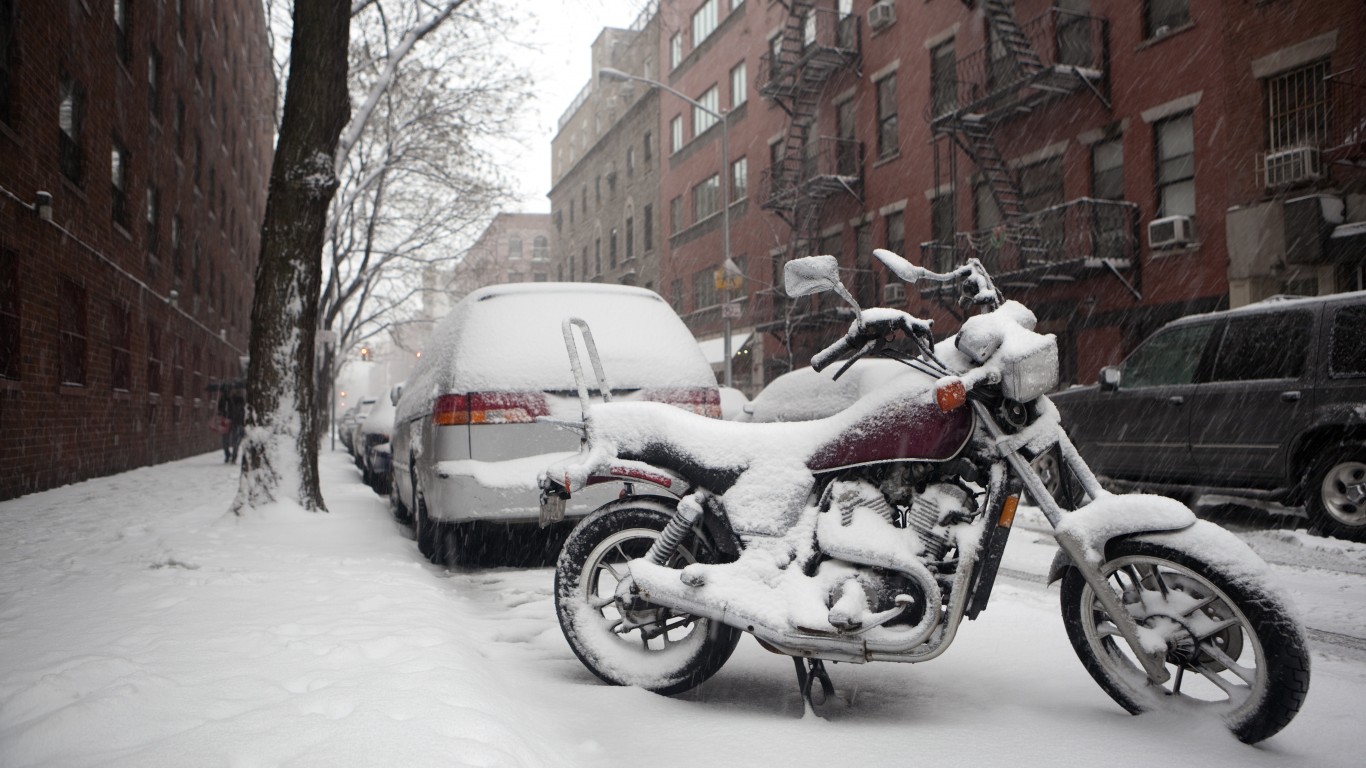
1. 1978
> Fatal crash rate: 95.4 per 100,000 registered motorcycles
> Fatal crashes involving motorcycles: 4,643 — 20th most since 1975
> Lives saved by motorcycle helmets: 900 — 19th most since 1975
> Est. lives that would have been saved by helmets: 1,588 (34.2% of all deaths)
Essential Tips for Investing: Sponsored
A financial advisor can help you understand the advantages and disadvantages of investment properties. Finding a qualified financial advisor doesn’t have to be hard. SmartAsset’s free tool matches you with up to three financial advisors who serve your area, and you can interview your advisor matches at no cost to decide which one is right for you. If you’re ready to find an advisor who can help you achieve your financial goals, get started now.
Investing in real estate can diversify your portfolio. But expanding your horizons may add additional costs. If you’re an investor looking to minimize expenses, consider checking out online brokerages. They often offer low investment fees, helping you maximize your profit.
Thank you for reading! Have some feedback for us?
Contact the 24/7 Wall St. editorial team.
 24/7 Wall St.
24/7 Wall St. 24/7 Wall St.
24/7 Wall St.


